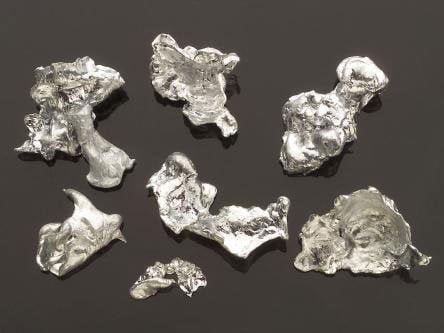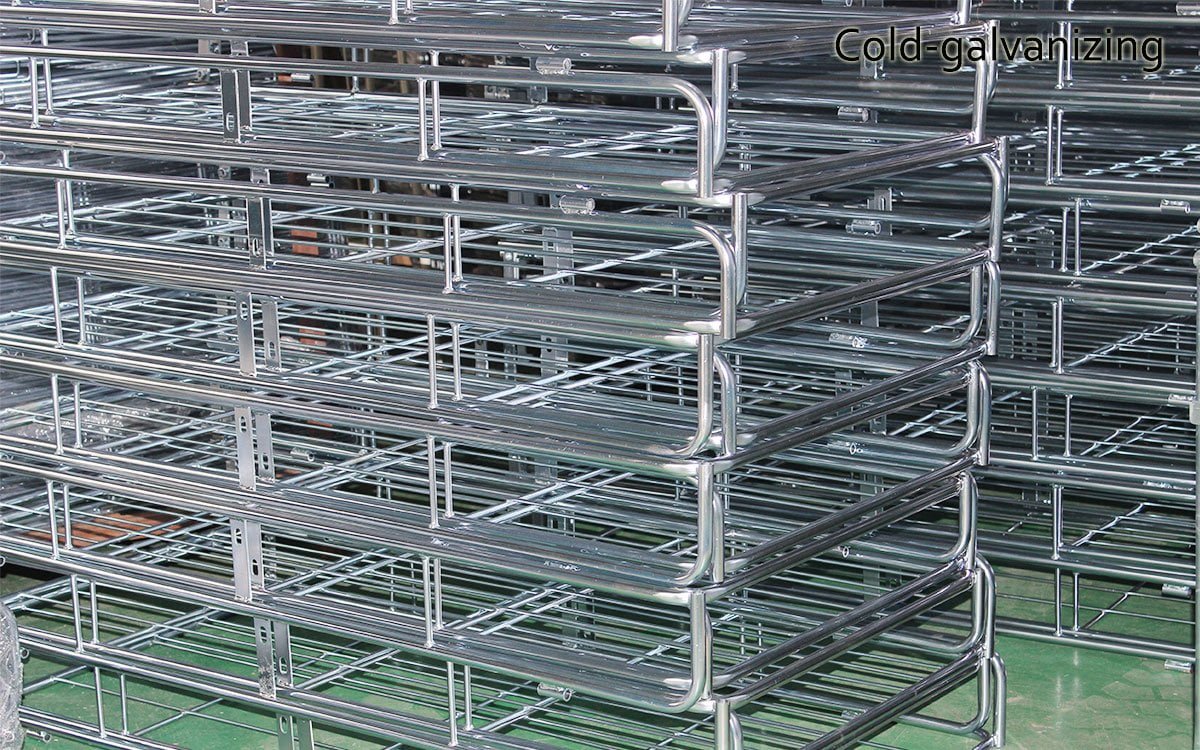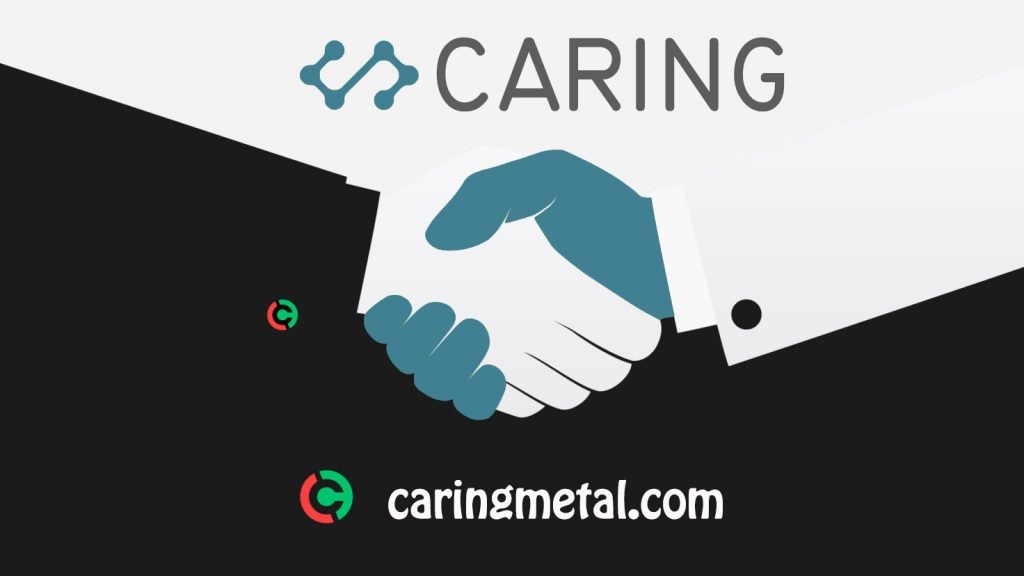Zinc plating refers to a surface treatment technology that coats a layer of zinc on the surface of a metal, alloy or other material to perform aesthetics and rust prevention.
For CARING’s customers, many of them are interested in the galvanizing process. The following article will introduce the galvanizing process and the difference between hot-dip galvanizing and cold galvanizing.

Zinc-half of the world’s zinc is used for galvanizing.
Zinc is easily soluble in acid and soluble in alkali, so it is called amphoteric metal. Zinc is hardly changed in dry air, so it’s widely used in the zinc plating industry.
For our material handling equipment, zinc coating is mainly used to prevent the corrosion of steel, and its protective performance has a great relationship with the thickness of the coating.
Galvanization
Hot-dip galvanizing
The rust-treated steel is placed in a zinc bath at about 500 ° C to allow the zinc layer to adhere to the surface of the steel structure.

Cold-galvanizing(electro galvanizing)
Through the above comparison, Did you get how to choose cold galvanizing vs hot galvanizing? if you need large equipment for outdoor use, then choose hot-dip galvanizing, like heavy-duty pallets, highway fences, etc. If you need carts, roll containers, storage Cage used in warehouses, cheap and beautiful cold galvanizing is your best choice.

Introduction: When it comes to protecting metal surfaces from corrosion, galvanizing is an effective and widely-used method. However, there are two common techniques: cold galvanizing and hot galvanizing. Choosing the right method is crucial as it can determine the longevity and durability of the protective coating. In this blog post, we will explore the differences between cold galvanizing and hot galvanizing, and provide insights on how to choose the most suitable option for your specific needs.
- Understanding Cold Galvanizing: Cold galvanizing, also known as zinc-rich paint, is a method that utilizes a zinc-rich coating to protect metal surfaces. The coating is typically in the form of a sprayable compound or paint, containing a high percentage of zinc particles. It serves as a sacrificial barrier between the metal substrate and the environment, preventing corrosion.
Pros of Cold Galvanizing:
- Easy application: Cold galvanizing can be applied on-site using a spray gun or brush, making it a convenient option for touch-up or repair work.
- Versatile: It can be applied to both large and small surfaces, and various types of metals, including steel, iron, and aluminum.
- Cost-effective: Cold galvanizing is generally more affordable compared to hot galvanizing, making it a preferred choice for smaller projects with limited budgets.
Cons of Cold Galvanizing:
- Limited durability: The protective coating provided by cold galvanizing is relatively thin and does not have the same level of durability as hot galvanizing. It may require more frequent maintenance and reapplication to maintain its effectiveness.
- Lower temperature resistance: Cold galvanized coatings may not offer the same heat resistance as hot galvanizing, making them more susceptible to damage in high-temperature environments.
- Understanding Hot Galvanizing: Hot galvanizing, also known as hot-dip galvanizing, is a process that involves immersing the metal into a bath of molten zinc. The zinc bonds metallurgically with the metal substrate, creating a highly durable and corrosion-resistant coating.
Pros of Hot Galvanizing:
- Exceptional durability: Hot galvanizing provides a thick and robust coating that withstands harsh conditions, including exposure to saltwater, extreme temperatures, and abrasion.
- Longevity: Due to its superior corrosion resistance, hot galvanized coatings can last for several decades without requiring significant maintenance or reapplication.
- Full coverage: The immersion process ensures that all surfaces, including inner corners and hard-to-reach areas, are uniformly coated, providing comprehensive protection against corrosion.
Cons of Hot Galvanizing:
- Complex process: Hot galvanizing requires specialized equipment and facilities, making it a less practical option for on-site application or smaller projects.
- Longer lead times: The immersion and curing process for hot galvanizing can be time-consuming, which may affect project timelines.
Choosing Between Cold and Hot Galvanizing: To determine which method is best suited for your specific needs, consider the following factors:
- Scale of the project: Cold galvanizing is suitable for smaller projects or touch-up work, while hot galvanizing is more appropriate for larger, long-lasting applications.
- Environmental conditions: If the metal will be exposed to harsh or corrosive environments, hot galvanizing provides superior protection.
- Budget: If cost is a significant concern and durability is a secondary priority, cold galvanizing may be a more economical choice.
Conclusion: Choosing between cold galvanizing and hot galvanizing depends on various factors, including project scale, environmental conditions, and budget. Cold galvanizing offers ease of application and affordability, whereas hot galvanizing provides exceptional durability and longevity. Consider your specific requirements and consult with professionals to determine the most suitable galvanizing method to protect your metal surfaces effectively.
Check CARING finished in bright electroplated zinc, with lacquer top coat material handling tools in the below:
check the Galvanization on wiki


